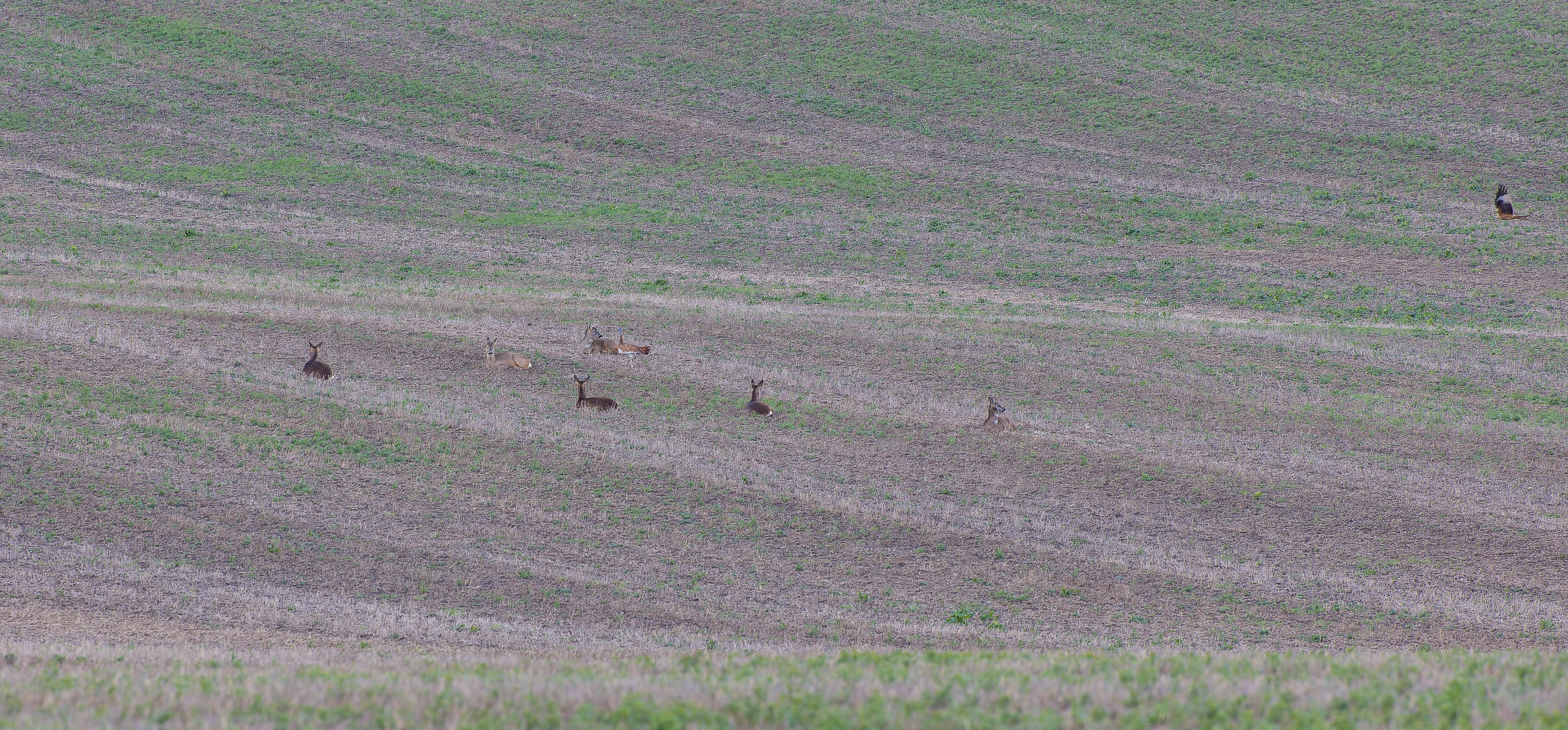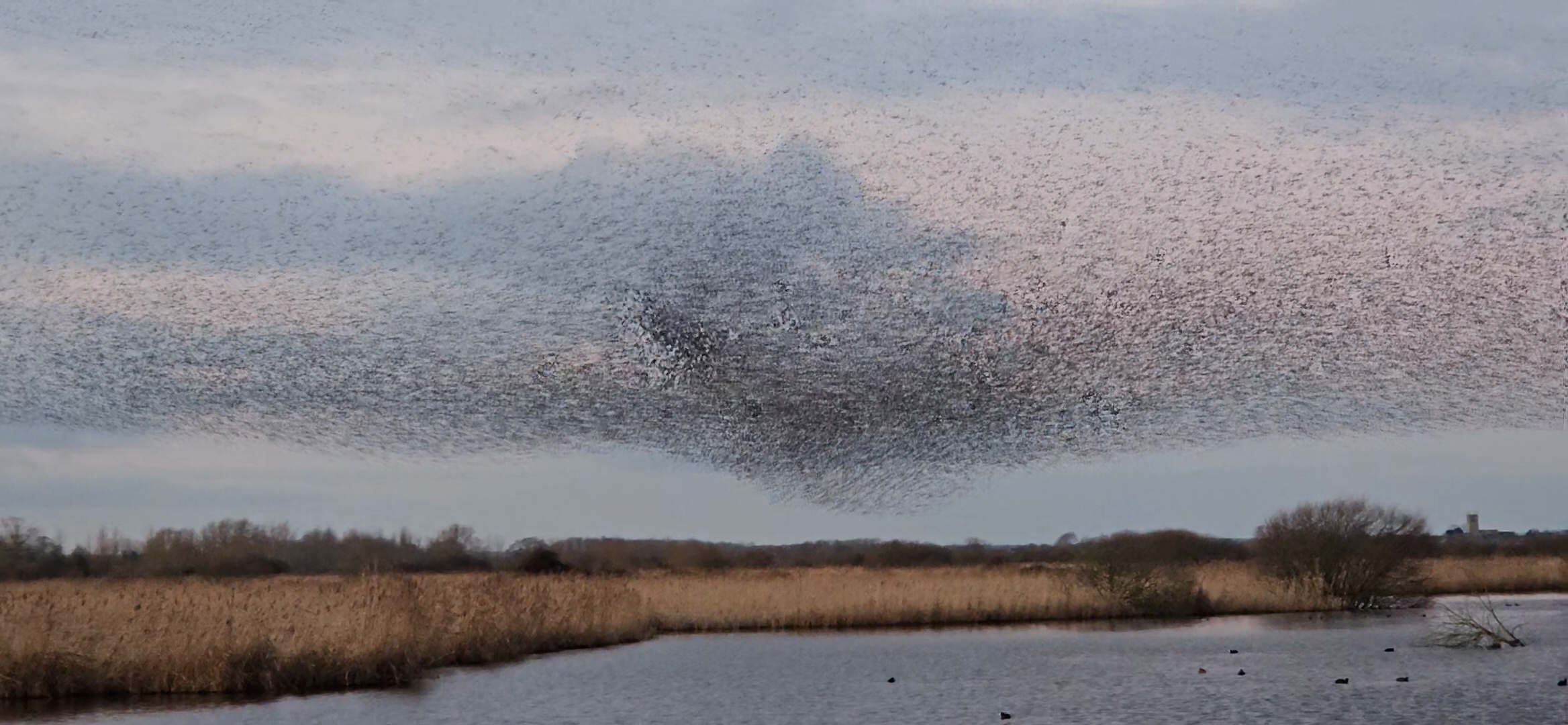I have just spent Christmas and New Year back in Oxford, where I lived for 24 years and where my birding journey began. The weather was almost uniformly horrible, and I was busy with work/family, so there was very little birding. But the first actual nice day we got — i.e. with no rain and blue skies persisting right to the evening, which comes at 3.30pm! — I decided to head to Otmoor, an area of low-lying land north-east of Oxford.
Otmoor was the main place I went regularly when I first started birding in the mid/late 90s. I used to walk out to The Pill, a marshy area with rough, uncultivated fields dotted with hawthorn and blackthorn, attractive to winter visitors like Hen Harrier, Short-eared Owl, Redwing and Fieldfare. It was usually a slow, muddy walk of about 30-40 minutes north along an old Roman road across the MoD Rifle Range, and not to be attempted when the red flags were flying. One afternoon/evening was even good enough for me to write a short “trip report” to myself, when I came across my one and only Jack Snipe, flushed in the gloom as I walked back to the car only a few days before Christmas in 1998.
A few years after I started visiting, the RSPB began buying up land from local farmers to return the flood-plain fields to reed-bed and marsh-land that it had been historically, to provide habitat for endangered birds like Great Bittern, and those succumbing to the twin pressures of urban development and intensive agriculture, like Northern Lapwing. The restoration has been an amazing success, and Bittern and even Cranes have returned to Oxfordshire as a result. As the reed-bed became more established, some 20 years ago, RSPB Otmoor started to acquire fame as the site of an impressive winter roost of European Starlings; each evening a spectacular murmuration can be witnessed, as the birds arrive en masse to the reed-bed. In the mid/late-2000s I went out a few times to witness for myself. We then departed England for South Australia in 2012, and although we have visited Nikki’s family for Christmas on several occasions, I have only managed to visit once in the intervening dozen winters.
As I hinted above, the weather for most of our stay in Oxford was pretty-much the worst of English winter weather: gloomy, cloudy, raining almost every day. Not for us the Christmas-card images of clean white snow beneath pale blue skies, the fresh, biting-cold air on the nose and clouds of condensation with every breath. In fact in those 24 years I lived in Oxford I had such a Christmas only twice (pretty special memories!). But on Jan 6th 2024 the forecast actually seemed ok and for once we had no drinks-party or dinner-date already booked; I decided to commemorate “insurrection day” with a walk to the reed-bed at Otmoor.
In the diffuse evening light, Otmoor looked especially beautiful and as I approached the first main RSPB field I saw thousands of birds wheeling around. All the water that had accumulated or been dumped by the flooded rivers made this first field much damper than usual and it was consequently attractive to around two or three thousand European Golden Plover — more than I have ever seen together — and several hundred Northern Lapwing.



I trudged, and at times almost waded, the 30 minute muddy walk to the reedbed where the Starlings roost. A superb sunset developed as I waited for the Starlings to arrive.


Over 20-30 minutes a smallish crowd of 20 or so people gathered, some birders, some just interested in seeing one of nature’s special shows. A young pair of birders near me wandered closer and asked “Are people waiting for something in particular”. “Yes”, I explained, “We’re all here for the Starlings — I imagined that’s why you are too”. “No, we’re just here because we fancied seeing an RSPB reserve. We’re visiting from Australia”. “Fancy that — so am I, sort of! Where are you from?”, “We’re from Adelaide”. Ah yes, Adelaide, where the degrees of separation are about 1.2… You can imagine how the conversation went from there, not least reflecting on what an “Adelaide kind of thing” just happened.
But the conversation was interrupted by about 50,000 Starlings arriving, wheeling and surging, the flock expanding and contracting, one large organism. We could hear the rush of thousands of wings as they flew overhead, blackening the sky. Every now and then a bird would decide the time was right to find a reed-stem to roost on, and following the leader, hundreds of other descending birds formed a funnel, pouring downwards like dark liquid into the reedbed.


I managed a small amount of other birding during the 3 weeks I was in Oxford. A few days after I Christmas I’d planned to bird around Farmoor with friends Tom Bedford and Dave Lowe, followed by some catching up in the pub. Storm Henk convinced us to go straight to the pub, so there was no birding but the craic was excellent at the Bear and Ragged Staff.
A couple of days later I conceived a plan to use a twitch to meet up with Steve and Penny Young. A superb — and apparently wild, not plastic — Baikal Teal was located at RSPB Greylake in Somerset, almost equidistant from Oxford and the Young’s place on Dartmoor. This was for the craic, so I was looking forward to the chatting and pub more than the bird, but it was still gratifying that the bird was showing on arrival, not too far in front of the hide. I bagged some decent tickable views, and then one woman was kind enough to let me use her Swarovski scope to phone-scope a short video. I was lucky that it put its head up for 10 seconds while I was videoing, because for the next hour or more it had its head tucked under its wing and slept. Oh, there were some other fairly interesting birds here too, including 1000s Northern Lapwing, several Great Egret, Marsh Harrier Cetti’s Warbler and hundreds of other ducks including Teal, Wigeon and Northern Shoveler (I reflected that the last time I’d twitched a duck it had been a Northern Shoveler on Hindmarsh Island in 2021!). But it was the company and the craic I was mainly here for, and as soon as the pub was open, the three of us adjourned for a fabulous pie, pint of ale, and a great and long overdue catchup.


The next morning was New Year’s Eve. While the rest of the family was waking up and getting ready for the day, I “got permission” for a quick trip up to the ridgeway where a Great Bustard from the Salisbury Plain reintroduction program had been found hanging around with a group of Roe Deer. It was, as always, beautiful up on the ridgeway, quaint villages and rolling downs, with a superb view north towards Oxford. I scanned a large area where the bird had previously been seen and eventually found a group of six deer in the middle of one rather distant and inaccessible field. There was no Bustard to be seen (but I did find a near-namesake, Common Buzzard), but after a recce elsewhere in the car, I returned for one last look. As the deer came into view, so did a huge bird in flight. Got ‘im, you beauty! The Great Bustard promptly alighted next to its adopted family. I squeezed off a few very distant record shots and drove back to Buckland in time for brekkie.

Yes, it’s in there somewhere… I’ve kept the super-wide crop to show how distant it was, but also because I just noticed the Red Kite that has drifted into the right hand side of the frame!

